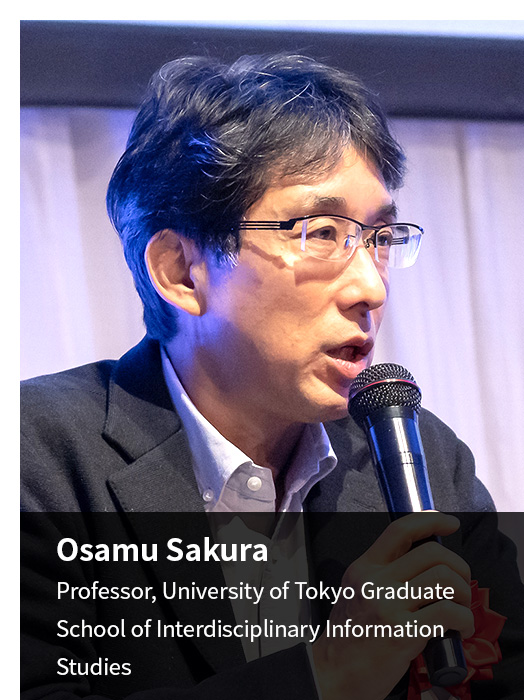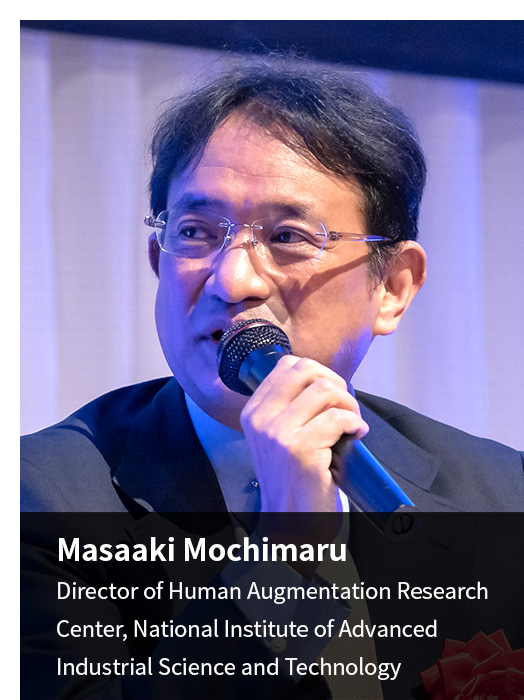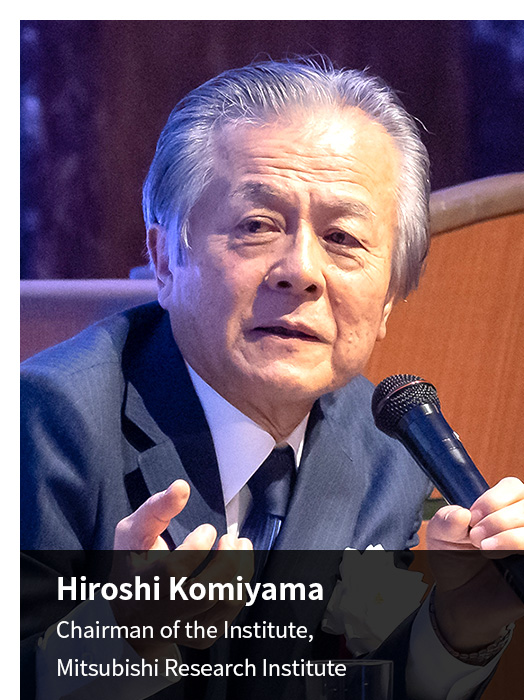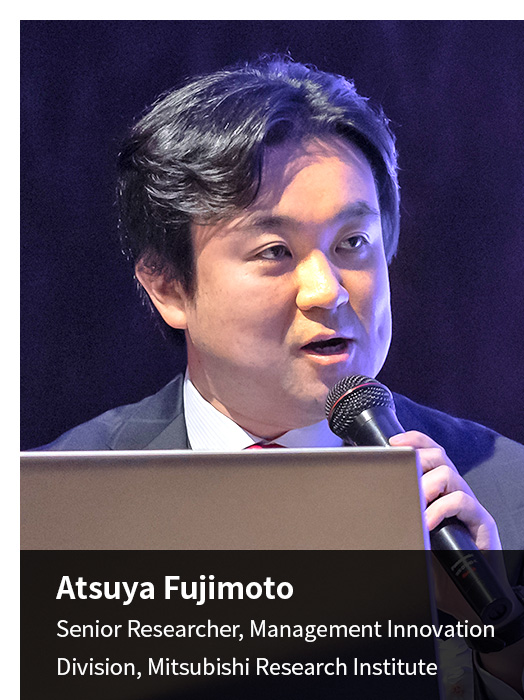Since ancient times, human beings have mastered a variety of tools and technologies, creating new artifacts one after another to overcome a myriad of changes to their environment. Now, as a fusion of AI, robotics and knowledge of big data, neuroscience, and the life sciences, human augmentation technologies have developed to such an advanced degree that the environment surrounding these technologies itself is poised to undergo a massive transformation. What impact will these complex and intertwined technological ecosystems have on society and industry? Will their consequences truly lead to a creative future, or will they give rise to unforeseen societal issues? In a recent roundtable discussion, Masaaki Mochimaru, a leader in the field of human augmentation technologies, Osamu Sakura, a specialist in evolutionary science, and our own Chairperson Hiroshi Komiyama engaged in a multifaceted discussion from their respective points of view. A transcript is included below.
Masaaki Mochimaru, Director of Human Augmentation Research Center, National Institute of Advanced Industrial Science and Technology
Osamu Sakura, Professor, University of Tokyo Graduate School of Interdisciplinary Information Studies
Hiroshi Komiyama, Chairman of the Institute, Mitsubishi Research Institute
Osamu Sakura, Professor, University of Tokyo Graduate School of Interdisciplinary Information Studies
Hiroshi Komiyama, Chairman of the Institute, Mitsubishi Research Institute
Moderated by:Atsuya Fujimoto, Senior Researcher, Management Innovation Division, Mitsubishi Research Institute




